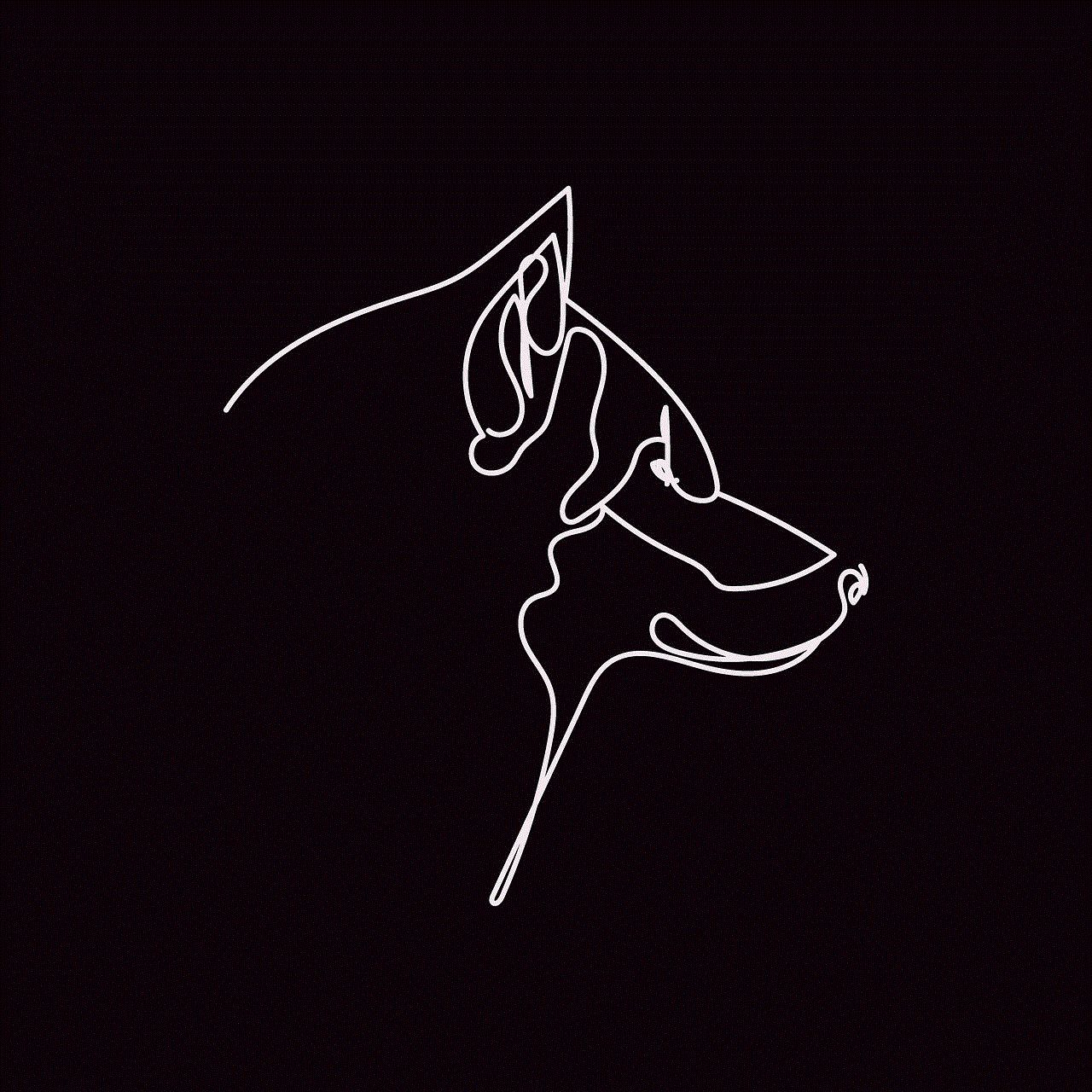baby tracking device
As a parent, the safety and well-being of your baby is always a top priority. From monitoring their sleep patterns to tracking their developmental milestones, there are a lot of things to keep track of when it comes to your little one. This is where a baby tracking device can come in handy. These devices are designed to make parenting easier and provide peace of mind by keeping you informed about your baby’s activities and whereabouts. In this article, we will take a closer look at baby tracking devices, their features, benefits, and how they can help you in your parenting journey.
What is a Baby Tracking Device?
A baby tracking device, also known as a baby monitor, is a device that allows you to keep an eye on your baby even when you are not in the same room. It consists of a transmitter and a receiver that communicate wirelessly, providing you with real-time information about your baby’s activities. The transmitter is usually placed near the baby, while the receiver can be carried around by the parent. Some baby tracking devices also come with a smartphone app, allowing you to monitor your baby from anywhere, as long as you have an internet connection.
Types of Baby Tracking Devices
There are different types of baby tracking devices available in the market, each with its own set of features and functionalities. Let’s take a look at some of the most common types of baby tracking devices.
1. Audio Monitors – These are the most basic type of baby tracking devices and consist of a transmitter and a receiver. They allow you to listen to your baby’s sounds, such as crying, cooing, or breathing, from a different room.
2. Video Monitors – These devices come with a camera that allows you to not only hear but also see your baby. The camera is usually mounted on the wall or placed on a shelf, and you can view the live feed on the receiver or through a smartphone app.
3. Movement Monitors – These monitors are designed to track your baby’s movements, such as breathing and sleep patterns. They come with a sensor pad that is placed under the baby’s mattress and can alert you if there is no movement for a certain period of time.
4. Wearable Monitors – These devices are worn by the baby, usually in the form of a wristband or a clip-on device. They track your baby’s vital signs, such as heart rate and oxygen levels, and can send alerts to your phone if there are any abnormalities.
5. Smart Monitors – These are the most advanced type of baby tracking devices, equipped with features such as temperature and humidity sensors, night vision cameras, and two-way audio communication. They can also integrate with other smart home devices, such as smart lights and thermostats.
Benefits of Using a Baby Tracking Device
1. Peace of Mind – The biggest benefit of using a baby tracking device is the peace of mind it provides to parents. You can rest assured that you will be alerted if your baby needs your attention, even if you are in a different room or away from home.
2. Better Sleep – With a baby tracking device, you can sleep better at night, knowing that you will be alerted if your baby wakes up or needs a diaper change. This can help you get more rest and be more productive during the day.
3. Remote Monitoring – If you need to be away from your baby for a short period of time, a baby tracking device can help you keep an eye on them remotely. You can check in on your baby’s activities through the receiver or your smartphone, giving you peace of mind while you are away.
4. Health Tracking – Some baby tracking devices come with health tracking features, allowing you to monitor your baby’s vital signs and sleep patterns. This can be especially useful for babies with health conditions or premature babies.
5. Parenting Support – For new parents, a baby tracking device can be a valuable tool in understanding your baby’s habits and needs. It can also provide helpful insights into your baby’s sleep patterns and development, making it easier for you to adjust your parenting style accordingly.
6. Safety – Baby tracking devices can also help keep your baby safe. Some devices come with features such as temperature and humidity sensors, which can alert you if the room is too hot or cold for your baby. This can help prevent health issues such as overheating or dehydration.
7. Easy to Use – Most baby tracking devices are user-friendly and easy to set up. You don’t need any technical knowledge to use them, and they come with clear instructions for installation and operation.
8. Portable – Many baby tracking devices are portable and can be easily moved from room to room or taken with you when traveling. This allows you to keep an eye on your baby no matter where you are.
9. Cost-Effective – While some baby tracking devices can be expensive, there are also budget-friendly options available in the market. They can save you money in the long run by preventing unnecessary trips to check on your baby or hiring a babysitter.
10. Multi-Purpose – Some baby tracking devices can also be used for other purposes, such as monitoring pets or elderly family members. This makes them a versatile investment for your household.
Factors to Consider When Choosing a Baby Tracking Device
1. Type – As mentioned earlier, there are different types of baby tracking devices available. Consider your needs and preferences to determine which type would be the most suitable for you and your baby.
2. Range – The range of the device is an important factor to consider, especially if you have a large house or if you need to monitor your baby from a distance. Make sure to choose a device with a long enough range to cover your needs.
3. Battery Life – Check the battery life of the device, as it can affect how often you need to charge it. Some devices have rechargeable batteries, while others use replaceable batteries.
4. Features – Consider the features that are important to you, such as two-way audio communication, temperature sensors, or smartphone app integration. Choose a device that has the features that will be most useful to you as a parent.
5. Price – Baby tracking devices can range from budget-friendly to expensive, so it’s important to determine your budget beforehand. Consider the features and functionality you need and choose a device that fits your budget.
In conclusion, a baby tracking device can be a valuable tool for parents, providing them with peace of mind, better sleep, and valuable insights into their baby’s health and development. With the wide range of devices available in the market, it’s important to consider your needs and preferences to choose the most suitable one for you and your baby. Whether it’s a basic audio monitor or a high-tech smart monitor, a baby tracking device can make your parenting journey a little easier.
romantic text abbreviations
In today’s fast-paced world, it is no surprise that even the way we communicate with our loved ones has become more efficient. With the rise of technology and social media, people are constantly looking for ways to express their feelings in a quicker and more concise manner. This has led to the popularization of text abbreviations, which are shortened versions of words or phrases commonly used in text messages. And with the increasing influence of romance in popular culture, it is no wonder that romantic text abbreviations have also become a trend. In this article, we will explore the world of romantic text abbreviations and how they have changed the way we express our love and affection.
First, let’s define what text abbreviations are. Text abbreviations are shortened versions of words or phrases used in text messages, chat rooms, and social media platforms. They are often used to save time and effort while typing on a phone or computer . They have become a staple in the digital age and are constantly evolving as new words and phrases are added to the lexicon.



Now, let’s dive into the world of romantic text abbreviations. These are abbreviated versions of popular romantic phrases and expressions that are commonly used in text messages between couples. Some of these abbreviations have been around for years, while others are relatively new. They are often used to express love, affection, and desire in a more efficient way. Let’s take a look at some of the most popular romantic text abbreviations and their meanings.
1. ILY – This is one of the most commonly used romantic text abbreviations, and it stands for “I love you.” It is a simple and straightforward way to express your love and affection for someone.
2. XOXO – This abbreviation is used to represent hugs and kisses, with “X” representing a kiss and “O” representing a hug. It is often used at the end of a message to show affection.
3. BAE – This abbreviation stands for “before anyone else” or “baby.” It is often used to refer to a significant other or a person who is the most important in one’s life.
4. LOML – This abbreviation stands for “love of my life.” It is often used to express deep and intense love for someone.
5. QT – This abbreviation stands for “cutie.” It is used to describe someone who is attractive and charming.
6. <3 - This symbol is used to represent a heart, and it is often used to express love, affection, and appreciation for someone. 7. ILU – This abbreviation stands for “I love you” and is often used to express love and affection in a more casual way. 8. XO – Similar to XOXO, this abbreviation is used to represent hugs and kisses, with “X” representing a kiss and “O” representing a hug. It is often used between friends or in a casual romantic relationship. 9. Mwah – This is an onomatopoeic word used to represent a kiss sound. It is often used to express love and affection in a playful manner. 10. 143 – This abbreviation stands for “I love you.” It is derived from the number of letters in each word of the phrase “I love you” (1-4-3). 11. HMU – This abbreviation stands for “hit me up.” It is often used to ask someone to contact or message them. 12. SMH – This abbreviation stands for “shaking my head.” It is often used to express disappointment or disapproval. 13. H&K – This abbreviation stands for “hugs and kisses.” It is often used to express affection and love in a casual manner. 14. YOLO – This abbreviation stands for “you only live once.” It is often used to encourage someone to take risks and live life to the fullest. 15. TTYL – This abbreviation stands for “talk to you later.” It is often used to let someone know that you will talk to them at a later time. 16. TMI – This abbreviation stands for “too much information.” It is used to indicate that someone has shared more personal information than necessary or desired.



17. HBU – This abbreviation stands for “how about you.” It is often used to ask someone about their thoughts or opinions.
18. L8R – This abbreviation stands for “later.” It is often used to indicate that someone will do something at a later time.
19. GR8 – This abbreviation stands for “great.” It is used to indicate that something is excellent or amazing.
20. BFF – This abbreviation stands for “best friends forever.” It is used to describe a close and long-lasting friendship.
21. OOTD – This abbreviation stands for “outfit of the day.” It is often used to show off one’s fashion sense or style.
22. TBT – This abbreviation stands for “throwback Thursday.” It is used to share old photos or memories on social media.
23. LOL – This abbreviation stands for “laugh out loud.” It is often used to indicate that something is funny.
24. ROFL – This abbreviation stands for “rolling on the floor laughing.” It is used to express that something is extremely funny.
25. BTW – This abbreviation stands for “by the way.” It is often used to add additional information to a conversation.
26. S/O – This abbreviation stands for “shout out.” It is often used to give recognition or praise to someone publicly.
27. TMI – This abbreviation stands for “too much information.” It is used to indicate that someone has shared more personal information than necessary or desired.
28. NSFW – This abbreviation stands for “not safe for work.” It is used to warn someone that the content being shared is inappropriate for a work environment.
29. SMH – This abbreviation stands for “shaking my head.” It is often used to express disappointment or disapproval.
30. AFAIK – This abbreviation stands for “as far as I know.” It is used to indicate that the information being shared may not be 100% accurate.
These are just some of the many romantic text abbreviations that are commonly used today. With the constant evolution of language and the rise of digital communication, it is no surprise that new abbreviations are constantly being added to the list. These abbreviations have become a way for couples to express their love and affection in a more efficient and creative way. They have also become a part of popular culture and are often used in memes, social media posts, and even in everyday conversations.
It is important to note that while romantic text abbreviations are fun and convenient, they should not replace genuine and heartfelt communication in a relationship. Sometimes, it is important to take the time to express your feelings and thoughts in a more meaningful way. However, when used in moderation and in the right context, these abbreviations can add a playful and fun element to a relationship.



In conclusion, romantic text abbreviations have become a popular trend in today’s digital age. They are a way for couples to express their love and affection in a quick and efficient manner. While some may argue that these abbreviations have made communication less personal, they have also become a part of popular culture and have added a fun and playful element to romantic relationships. So the next time you receive a text from your significant other with a romantic abbreviation, don’t forget to send one back and keep the trend going.
